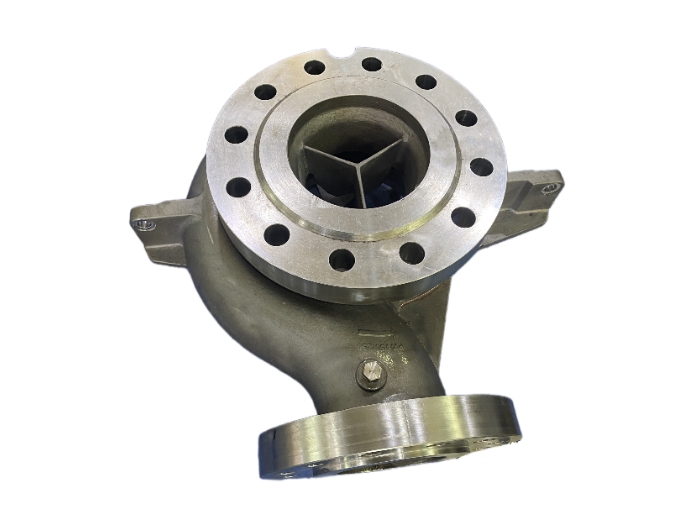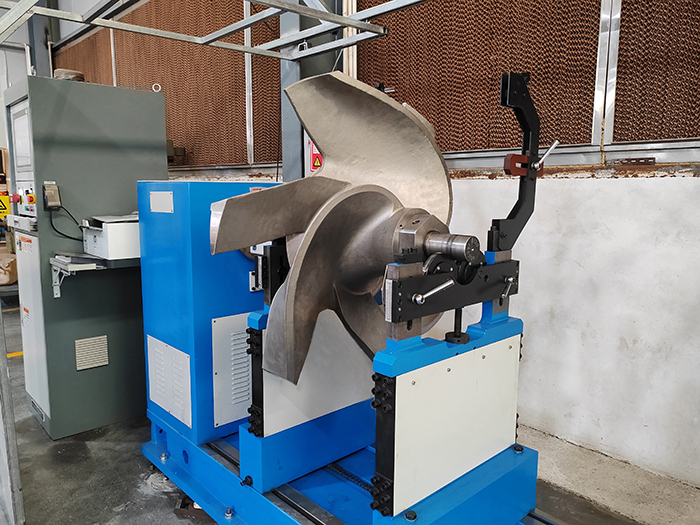-
Address
Wangjiang, Xingtian No 2 Rd, Xingning, Meizhou City, Guangdong Province, China.
- Email:enquiries@apalloy.com
- Phone:+86 0753 3354369
- WhatsApp: +86 18813765785

1. Understanding Pump Materials and Design
To increase the lifespan of a pump, it is important to understand the materials and design used in its construction. The choice of materials can greatly impact the pump's durability and resistance to corrosion and wear. For example, pumps made from stainless steel or other corrosion-resistant alloys are often more reliable and long-lasting.
Additionally, the design of the pump plays a crucial role in its lifespan. Factors such as impeller design, sealing mechanisms, and bearing arrangements can all affect the pump's performance and longevity. It is essential to choose a pump with a design that is suitable for the specific application and operating conditions.

2. Radial force
Industry statistics show that the biggest reason for centrifugal pumps to stop running is the failure of bearings and/or mechanical seals. Bearings and seals are the "canaries in the mine" - they are early indicators of the health of water pumps and also a precursor to the internal conditions of water pump systems.
Anyone who has been in this industry for a long time may know that one of the best practices is to operate pumps at or near their Best Efficiency Point (BEP). On BEP, the designed pump will withstand the minimum radial force. The resultant vector of all radial forces generated by operation away from BEP forms a 90 degree angle with the rotor, attempting to deflect and bend the shaft.
The large radial force and the resulting shaft deflection are the killers of mechanical seals and important factors in shortening the life of bearings. If it is large enough, the radial force will cause the shaft to deflect or bend. If the pump is stopped and the runout on the shaft is measured, no errors will occur because it is a dynamic condition, not a static condition.
The bending shaft (deflection) running at 3600rpm will deflect twice per revolution, so it actually bends 7200 times per minute. This high cyclic deflection makes it difficult for the sealing surface to maintain contact and to maintain the fluid layer required for proper sealing operation.
3. Inhalation pressure
Other key factors that affect bearing life include suction pressure, coupling alignment, and pipeline stress.
For single-stage horizontal cantilever process pumps (such as the ANSI B 73.1 model), the combined axial force acting on the rotor is directed towards the inlet. Therefore, to some extent, the limited reverse suction pressure actually reduces the axial force, thereby reducing the load on the thrust bearing and extending its service life. For example, a standard S-type ANSI pump with a suction pressure of 10 PSI can typically expect a bearing life of 6 to 7 years, but at a suction pressure of 200 PSI, the expected bearing life will increase by more than 50 years.
4. Calibration
Misalignment between the pump and motor can cause overload of the radial bearings. When calculating the misalignment, the radial bearing life is an exponential factor. For example, for a small deviation of only 1.52mm, the end user may encounter some kind of bearing or coupling problem after running for three to five months. However, for a deviation of 0.0254mm, the same pump may operate for more than 90 months.
5. Pipeline stress
Pipeline stress is caused by the misalignment of the suction and/or discharge pipes with the pump flange. Even in robust pump designs, the pipeline stresses generated can easily transfer these potential high forces to the bearings and their respective housings. Force (strain) causes improper fit of bearings and/or inconsistency with other bearings, resulting in the centerline being located on different planes.
6. Fluid characteristics
Fluid characteristics such as pH, viscosity, and specific gravity are key factors. If the medium is acidic or corrosive, the contact parts of the pump, such as the casing and impeller materials, need to maintain their functional state. The quantity, size, shape, and grinding quality of solids present in the fluid will all be influencing factors.
7. The Impact of Operational Environment on Pump Durability
The operational environment in which a pump operates can have a significant impact on its durability and lifespan. Factors such as temperature, humidity, chemical exposure, and abrasive particles in the fluid being pumped can all contribute to wear and tear on the pump components.
To enhance the longevity of a pump, it is important to consider the operational environment and take appropriate measures to protect the pump. This may include installing protective coatings, using filters or strainers to remove contaminants from the fluid, and implementing regular maintenance and inspection protocols.
8. Pump speed
The operating speed of the pump is another key factor. For example, a 3550 rpm pump wears out 4 to 8 times faster than a 1750 rpm pump.
Unbalanced impellers on cantilever pumps or certain vertical designs can cause shaft deflection, just like the radial force of a pump when operating away from BEP. Radial deviation and deflection may occur simultaneously. It is recommended that the impeller meet at least ISO1940 6.3 standard. If the impeller is trimmed for any reason, it must be rebalanced.

10. Pipe shape
Another important consideration for extending pump life is the geometry of the pipeline or how the fluid is' loaded 'into the pump.
For example, elbows on the vertical suction side of a pump have less harmful effects than horizontal elbows. The hydraulic load on the impeller is more uniform, so the load on the bearings is also more uniform.
The fluid velocity on the suction side should be maintained below 3.048m/s. Suggest keeping the speed below 2.4384m/s, and even better at 1.8288 m/s (assuming non mud fluid is used). The laminar flow that replaces turbulence will affect the loading method of the impeller and alter the rotor dynamics.
AoPu Alloy Industries Company Ltd. focused on investment in precision casting and machining over 2 decades, the main products are pump parts, valve parts etc. The weight range of our products is 0.1-600KG, we are good at to do the bigger parts with investment casting instead of sand casting. More detailes please look through our website: http://www.apalloy.com .
Wangjiang, Xingtian No 2 Rd, Xingning, Meizhou City, Guangdong Province, China.